The church of St Helen’s has been a notable feature of the Lundy skyline since 1897, but the history of Christianity on the island dates back as early as the 6th century.
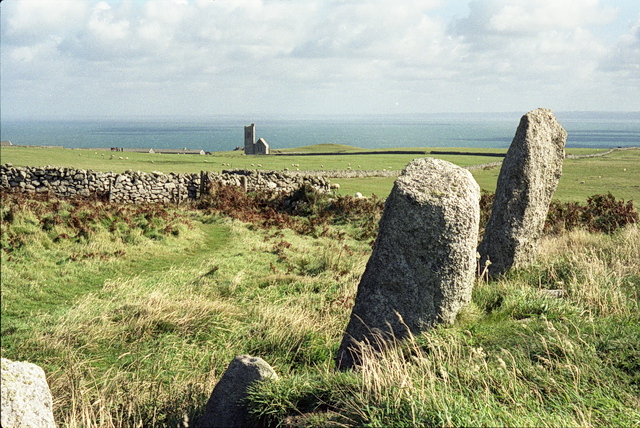
The burial ground near the Old Light is an important Christian site that contains four memorial stones dating from between the 5th and 8th centuries. The contents of a grave believed to be that of St Nectan are thought to have been moved to Hartland in the 7th century where the church, which is visible from Lundy on a clear day, is dedicated to the saint.
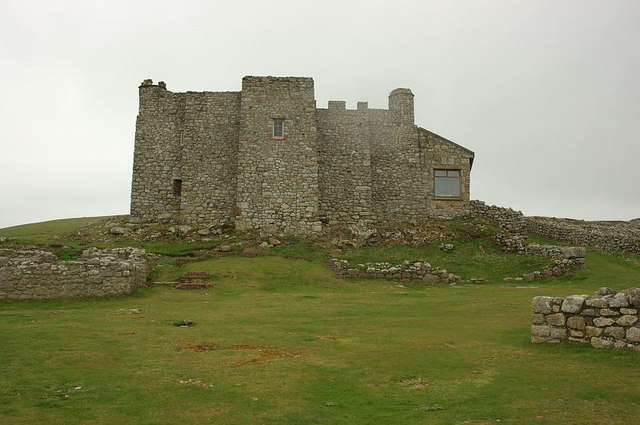
The first documentary record of a church on Lundy is in 1244 when the tithes for ‘all skins of rabbits taken in the island’ were payable to the church. It is possible that the church was built at the same time as the island was being fortified by Henry III against the Mariscos.
The ruined chapel in the burial ground was probably built by Thomas Bushell whilst he defended Lundy for the king during the Civil War. It has been a ruin since the 18th century.
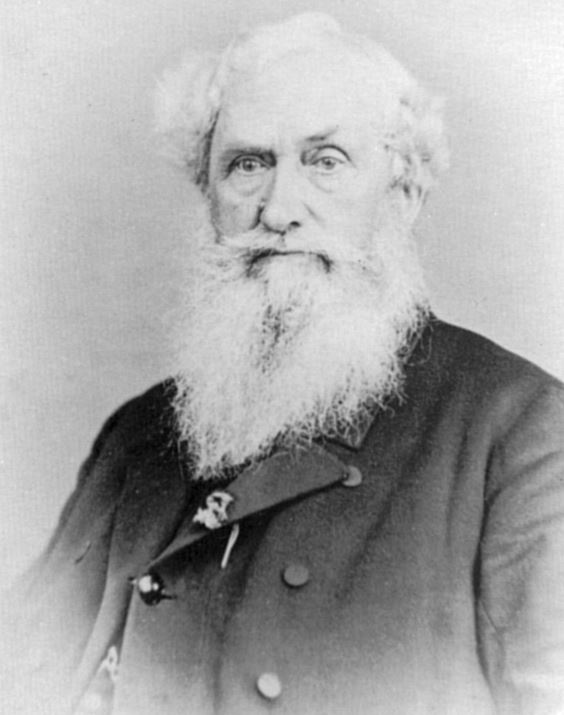
William Hudson Heaven buys Lundy using government compensation for the emancipation of his enslaved Jamaican plantation workers.
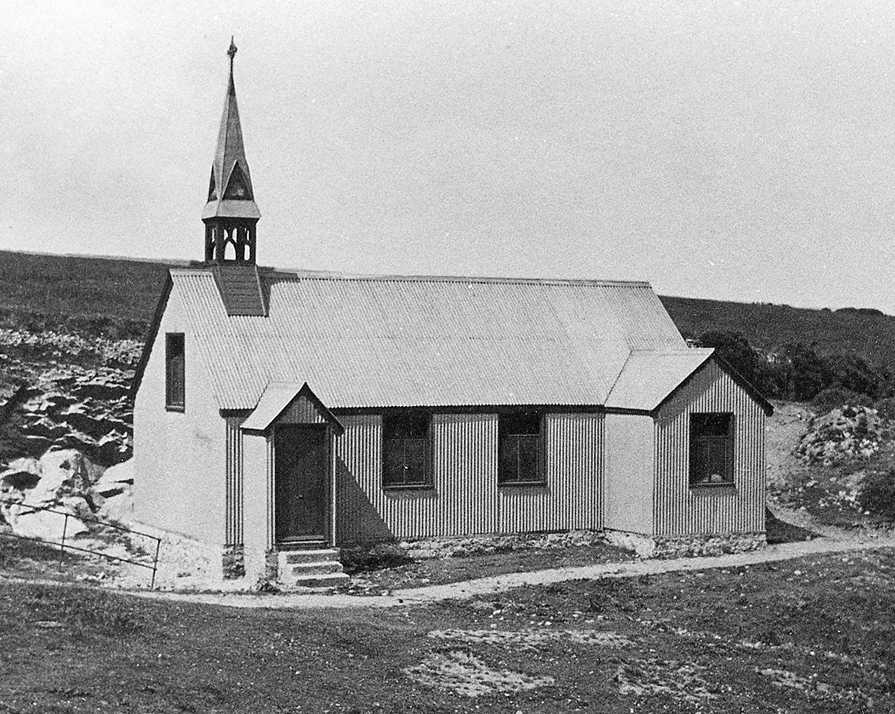
The Revd Hudson Grosett Heaven inherited Lundy from his father in 1883 and two years later he built a small, pre-fabricated church near the site of Government House, but he still held the ambition to build a larger, permanent church.
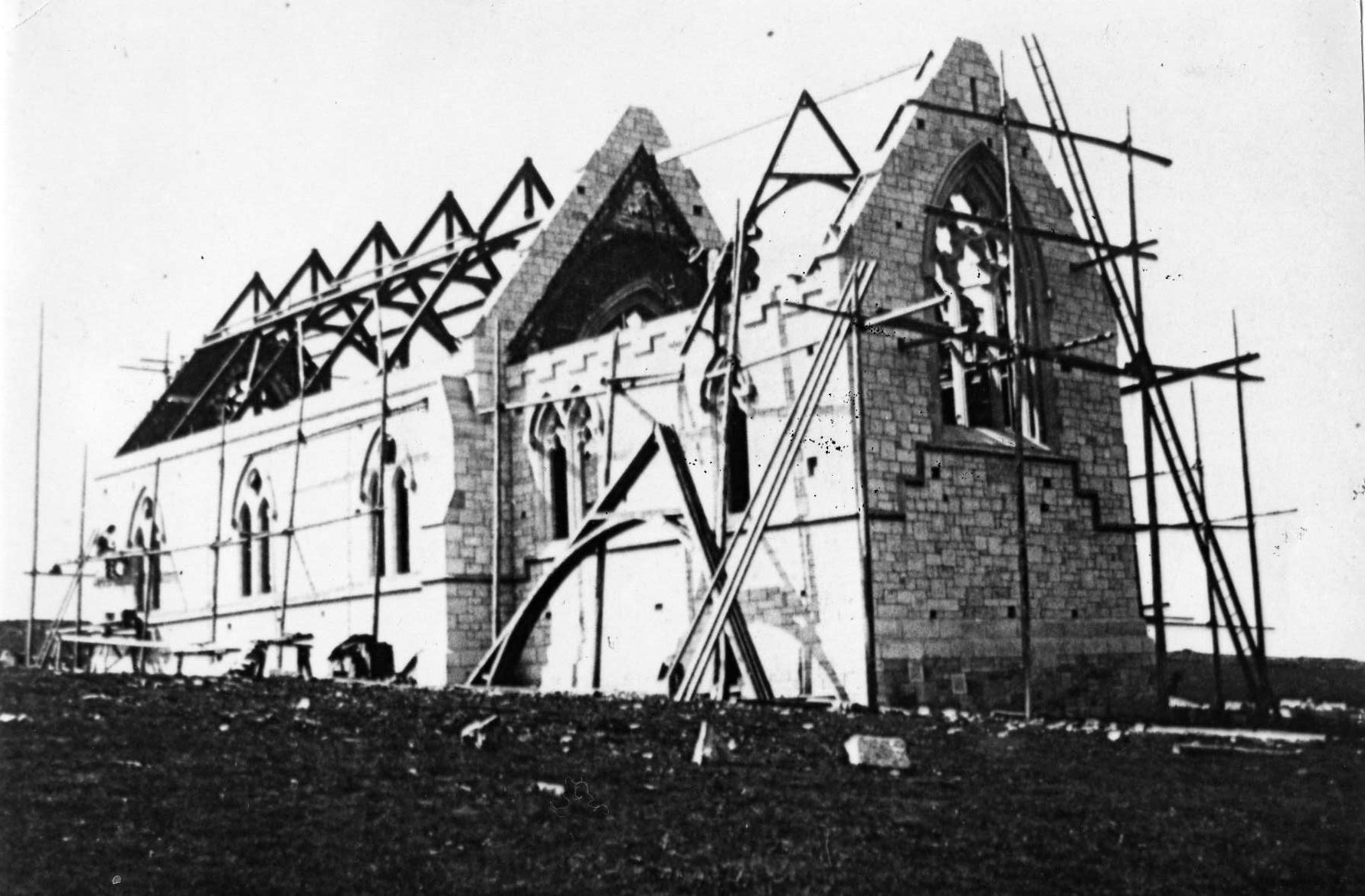
After inheriting a legacy the Rev. Heaven fulfilled his ambition in 1897 when the present church of St Helen was consecrated. The population of the island at the time was around 60 and was often swelled by visiting seamen, which explains its size. It is built using granite from the island and other materials brought in from Ilfracombe. Lundy became known as the ‘Kingdom of Heaven’. The church and its grounds, and the the burial ground near the Old Light, are gifted to the Church of England. Lundy remained an extra-parochial place.
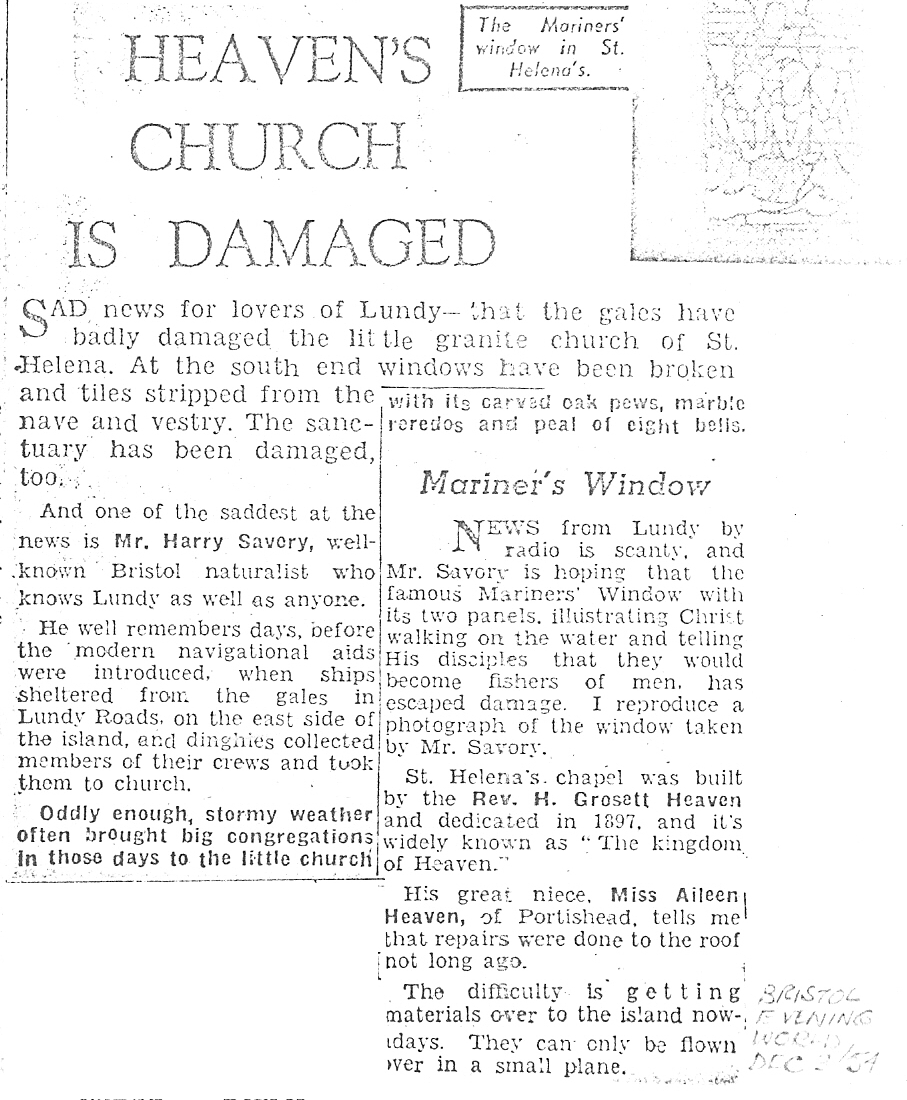
St Helen’s was severely damaged in a gale causing significant damage to the window above the altar and the roof. The arch was replaced by a concrete lintel, so that the window became rectangular in shape.
Lundy is purchased by the National Trust and leased to the Landmark Trust.
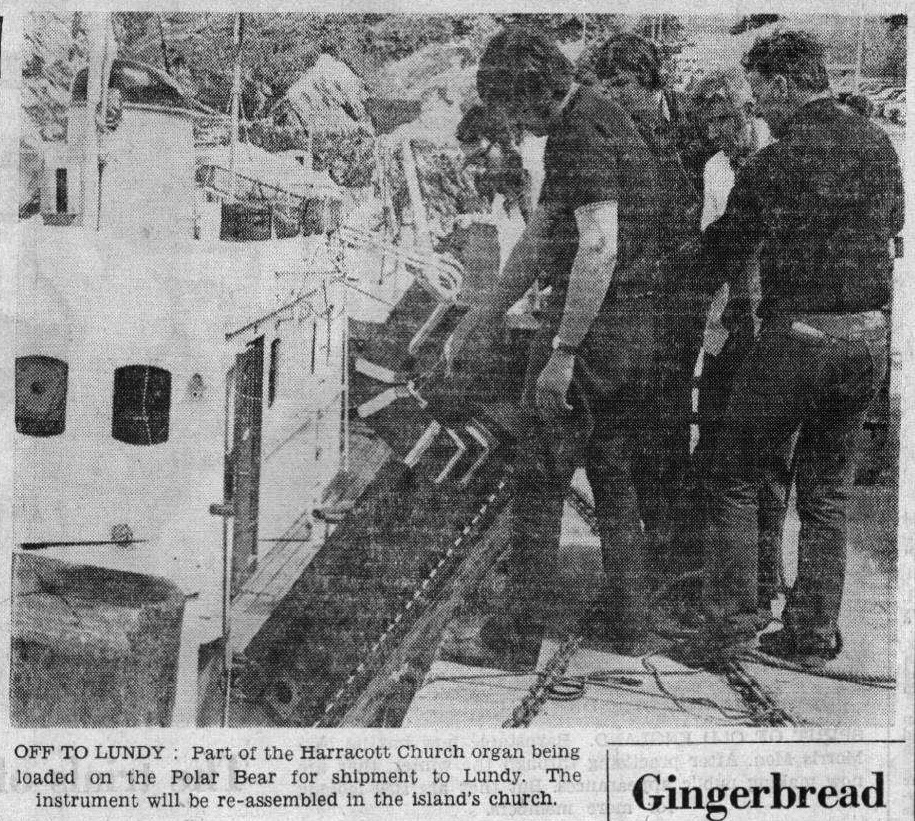
The pipe organ of Holy Trinity, Harracott is installed in the vestry arch of St Helen’s. It is ill-suited to the climate and by the 1990’s is in a poor condition.
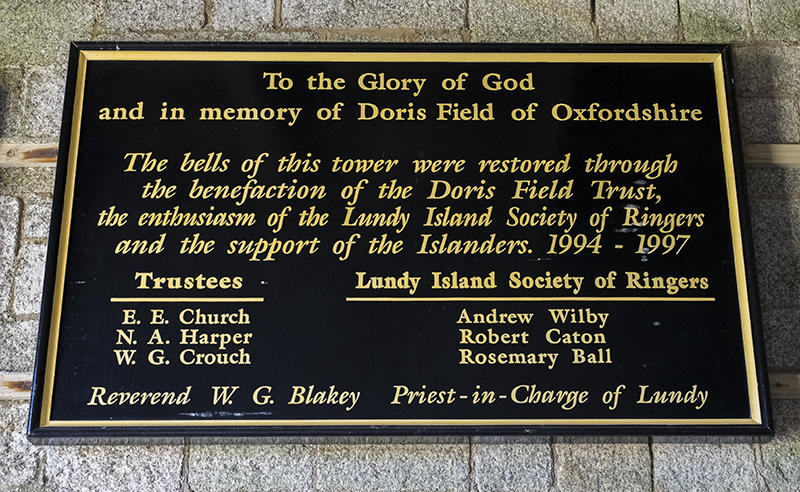
The fittings for the eight church bells quickly corroded and the bells were taken down from the tower in the early 20th century. In 1994 they were restored and continue to attract many groups of visiting bellringers to Lundy. Two more bells were added in 2004.
The parish of Lundy is created and is incorporated into the benefice of the Hartland Coast Mission Community.
A long term project to restore the church and adapt and it for educational and research purposes, as well as worship, comes to fruition. It is to be known as the St Helen’s Centre.
Apart from fully restoring the church, the vestry is converted to accommodation for two people; the pipe organ is removed and replaced with a digital electronic instrument; facilities to support events in the church are incorporated at the west end and a ground source heat pump installed. See the St Helen’s Centre page for more details.